Moroccan decoration is known for its strong colors, detailed patterns, and natural materials. Its appeal lies in how it combines visual structure with handmade character. Whether applied in full rooms or smaller design choices, this style brings recognizable features that work well in both traditional and modern interiors.
This guide explains the key components of Moroccan home décor, from surface finishes and lighting to furniture choices and layout ideas. Each section outlines how to apply these elements in different parts of the home while maintaining clarity and consistency in design.
1- Moroccan Style Characteristics
Distinct Color Use
Moroccan interiors often feature strong, noticeable colors. Earth tones like terracotta, ochre, and sand are combined with saturated blues, greens, and reds. These colors are applied through painted walls, furniture, or textiles.
Pattern and Geometry
Geometric design is a major part of Moroccan decoration. Tile, wood, plaster, and fabric often show repeating shapes and symmetrical forms. These patterns are not randomly placed; they follow a balanced structure.
Surface Texture
Rooms display a variety of surface types. Textiles feel rich and layered, walls may be coated in smooth plaster, and metal fixtures carry natural imperfections. These differences in material finish make rooms feel complete and full.
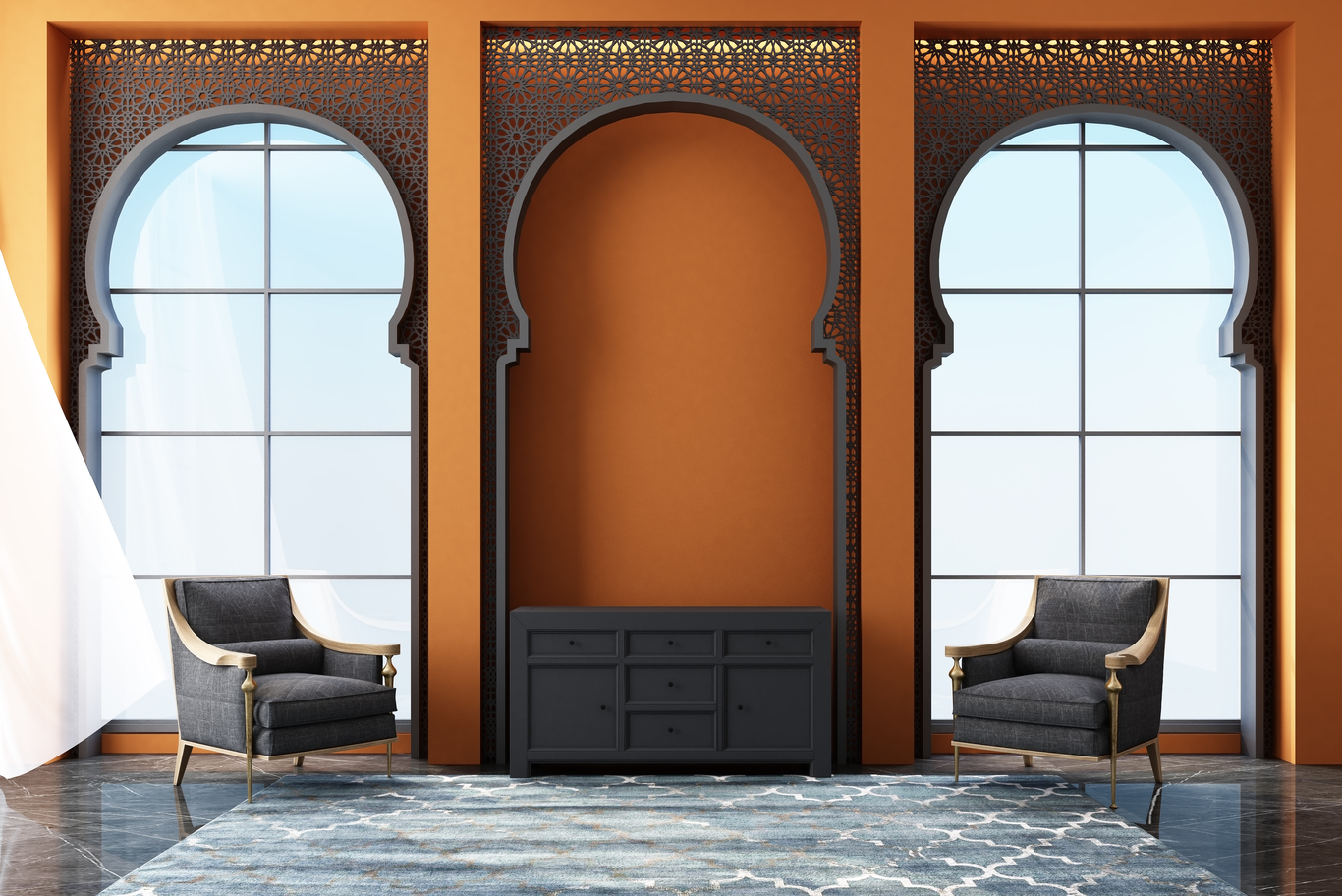
2- Common Interior Features
Lanterns and Lighting Fixtures
Lanterns with colored glass panels or punched metal covers create ambient light. The light spreads across walls and ceilings in subtle, broken patterns. These are often used in entryways, living areas, and corners.
Rugs and Floor Layers
Woven rugs are often used in multiple layers. They might differ in size or design but are placed together to give the floor visual interest. These rugs are made from wool, cotton, or a blend of natural fibers.
Decorative Walls
Wall sections may include wooden panels, mosaic tiles, or shaped plaster. These surfaces are designed for viewing as much as for structure. They bring variety to the interior without needing artwork or framed images.
3- Furniture and Room Structure
Low-Level Seating
Low cushions or bench seating is frequently arranged around a central table. This setup is traditional and remains in use today. It supports relaxed seating arrangements, suitable for both daily living and hosting.
Explore layouts in this Moroccan Majlis Design reference.
Wood Carving in Furniture
Furniture made from dark or medium-toned wood often features surface carving. Cabinets, bed frames, coffee tables, and chairs may carry this type of detail. These carvings are usually geometric or floral in structure.
Metal and Ceramic Accessories
Metal trays, bowls, and light fixtures are visible in most Moroccan interiors. Ceramics with hand-painted patterns also appear in kitchens, dining rooms, or display shelves. These items are both decorative and usable.
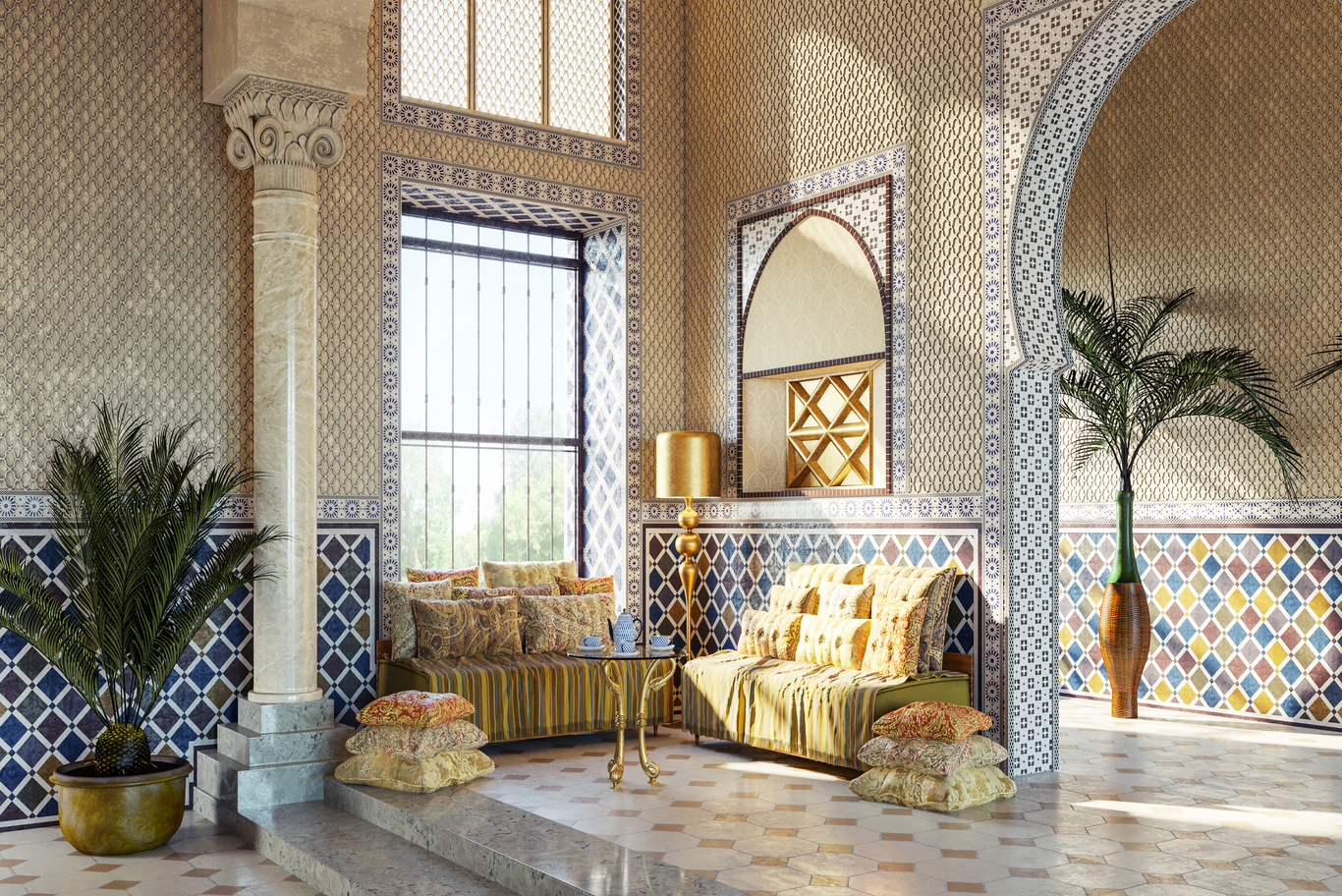
4- Architectural Influences
Arched Openings
Doors, windows, and interior passageways are often shaped in arches. These arches have specific curves and lines that differ from Western styles. They help define the Moroccan aesthetic in built form.
Ceiling Beams and Borders
Exposed beams or painted wooden ceiling sections are often seen in Moroccan rooms. These may be structural or only decorative. When combined with chandeliers or lanterns, they complete the vertical design.
Courtyard Features
Traditional layouts often place shared spaces around a courtyard. This area may include tiled floors, water features, and seating. The same materials and colors from the inside continue in these outdoor areas.
5- Moroccan Features in Today’s Interiors
Updated Use of Materials
Rather than replicating traditional interiors, some homes take certain materials and apply them to modern layouts. For example, Moroccan tiles might be used as a kitchen backsplash while the rest of the kitchen remains plain.
Accent-Only Application
Instead of complete rooms, homeowners often include one or two Moroccan features. A single lamp, rug, or screen can stand out in an otherwise simple space. This avoids visual overload while keeping the space unique.
Cultural Blending
Moroccan design can be included alongside other cultural influences. It often works next to Mediterranean, Turkish, or Indian styles due to shared material and pattern types.
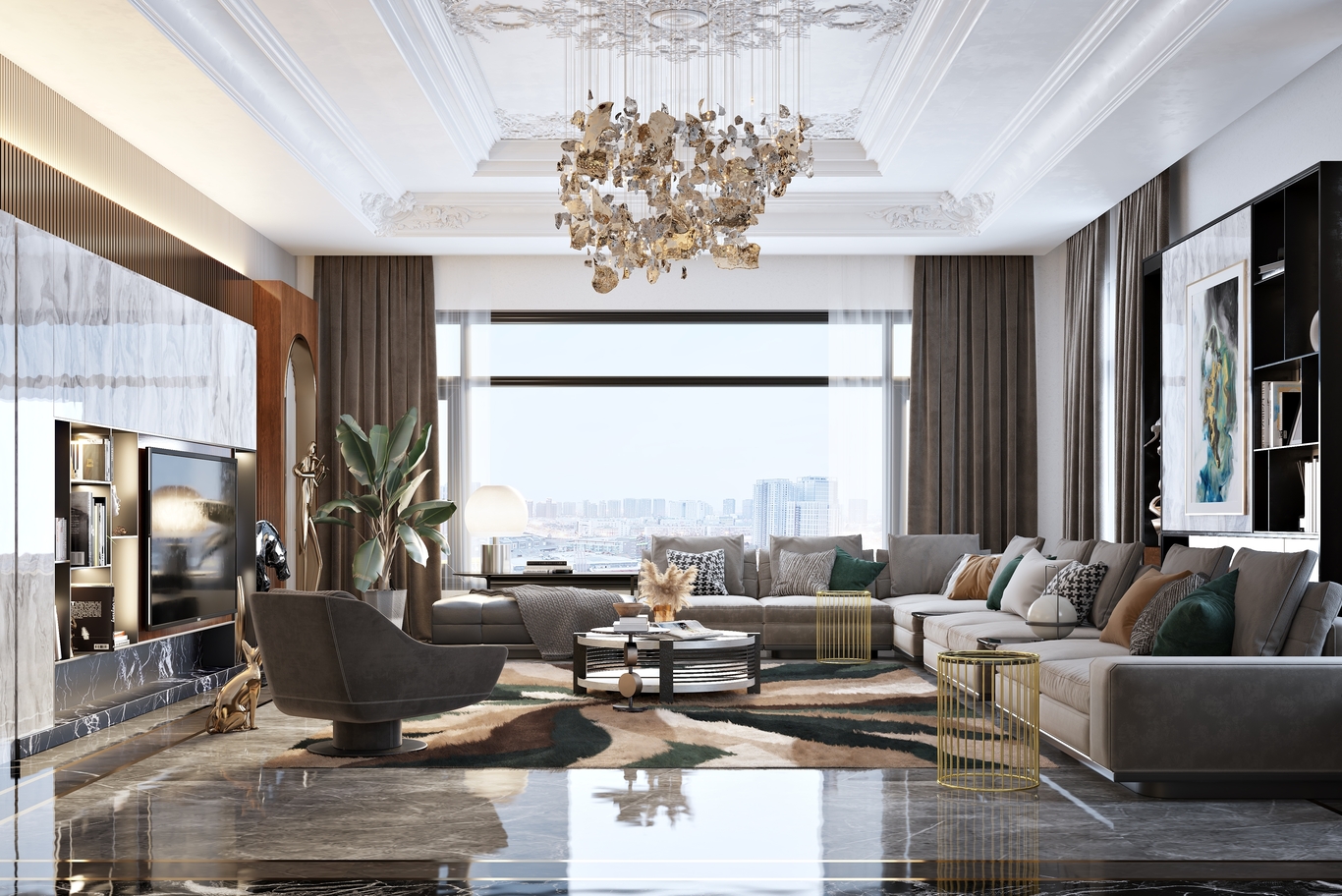
6- Use of Key Materials
Carved or Inlaid Wood
Dark wood is often used in decorative panels or frames. Inlays may include bone, metal, or lighter wood. These materials are applied to both walls and moveable items like boxes or stools.
Zellige Tiles
Zellige tiles are small, hand-cut pieces of glazed ceramic. They form complex mosaic surfaces. These tiles are applied to walls, tables, sinks, and even fountains. Their uneven texture adds to their visual character.
Tadelakt Plaster
Tadelakt is a lime-based plaster used on walls and floors. It creates a smooth but slightly reflective surface. This finish is durable and can handle humidity, making it useful in bathrooms and kitchens.
7- Rooms Best Suited for Moroccan Decor
Living Areas
A living room can include cushions, rugs, and carved woodwork. Large lanterns provide light while smaller tables fill center space. The design supports relaxed use and social gatherings.
Bedrooms
A Moroccan-inspired bedroom might use soft lighting, patterned fabric, and simple bedding. Wall colors can be deep but not overly dark. Furniture remains low and simple in form.
Entryways and Corridors
Smaller areas benefit from strong Moroccan elements. A tiled wall, a narrow bench with carvings, or a hanging lantern can create an immediate impression without taking up much space.
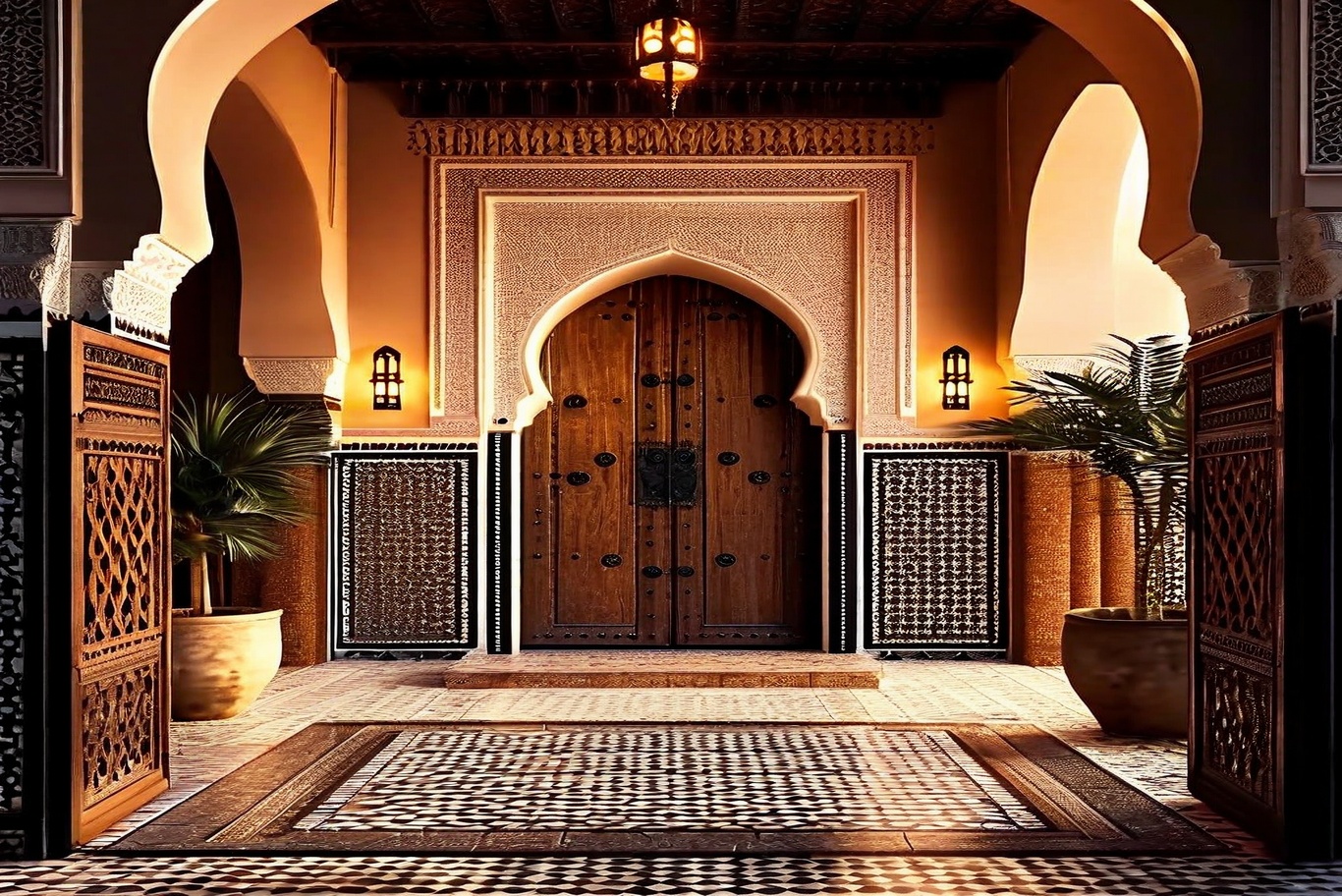
8- Design Benefits
Personalization
Each piece, from tile to light fixture, is unique or handcrafted. This gives rooms a specific identity. Items are chosen based on preference, not standard catalogs.
Variety in Color and Form
The use of many colors and shapes gives freedom to mix without losing control of the design. As long as colors relate to each other, the space holds together well.
Lasting Style
This design style does not follow quick trends. Many homes retain Moroccan features for decades without them appearing out of place or dated.
9- Design Sources and Examples
Visit Moroccan Majlis Layouts
To see real examples of traditional seating and room layout, check the linked Majlis Design. These designs use full sets of furniture and décor with structure and balance.
Study Arabesque Shapes
Arabesque design shares many qualities with Moroccan interiors. The patterns are structured but decorative. Learn more through this Arabesque Design Overview.
Ask a Design Expert
If the aim is to include Moroccan decoration in a current or new project, professional input helps in making accurate decisions. Designers can guide on what items work best in certain room sizes or lighting.
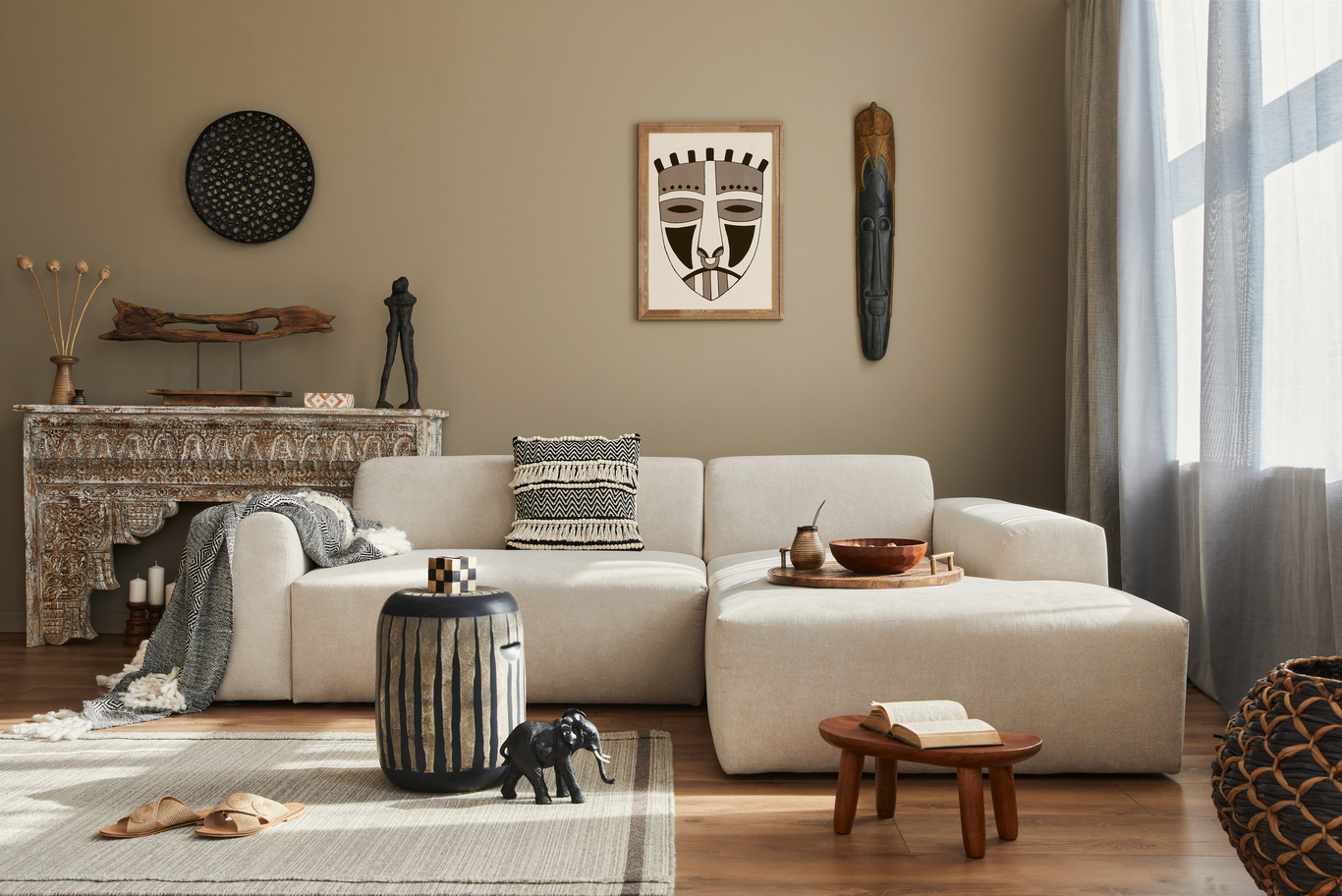
10- Room Planning Tips
Keep the Focus Balanced
Even though Moroccan interiors support rich visuals, not every surface needs to be filled. Select a few areas to carry the main color or pattern focus, and let others stay quieter.
Use Lighting Correctly
Light should not overpower the room. Use dimmers or separate switches to adjust lighting through the day. Lanterns or lamps with patterned covers should be used in spaces where their shadow effect is visible.
Maintain Material Consistency
While combining tile, metal, and wood is expected, each should be repeated in more than one place. This keeps the room from looking like a showroom with unrelated items.
Final Note
Moroccan decoration brings structure, tradition, and material value into residential spaces. It uses repetition, material change, and visual rhythm to create rooms that are both pleasant and lived-in. Whether using full layouts or small decorative changes, it supports varied tastes while keeping a distinct identity.
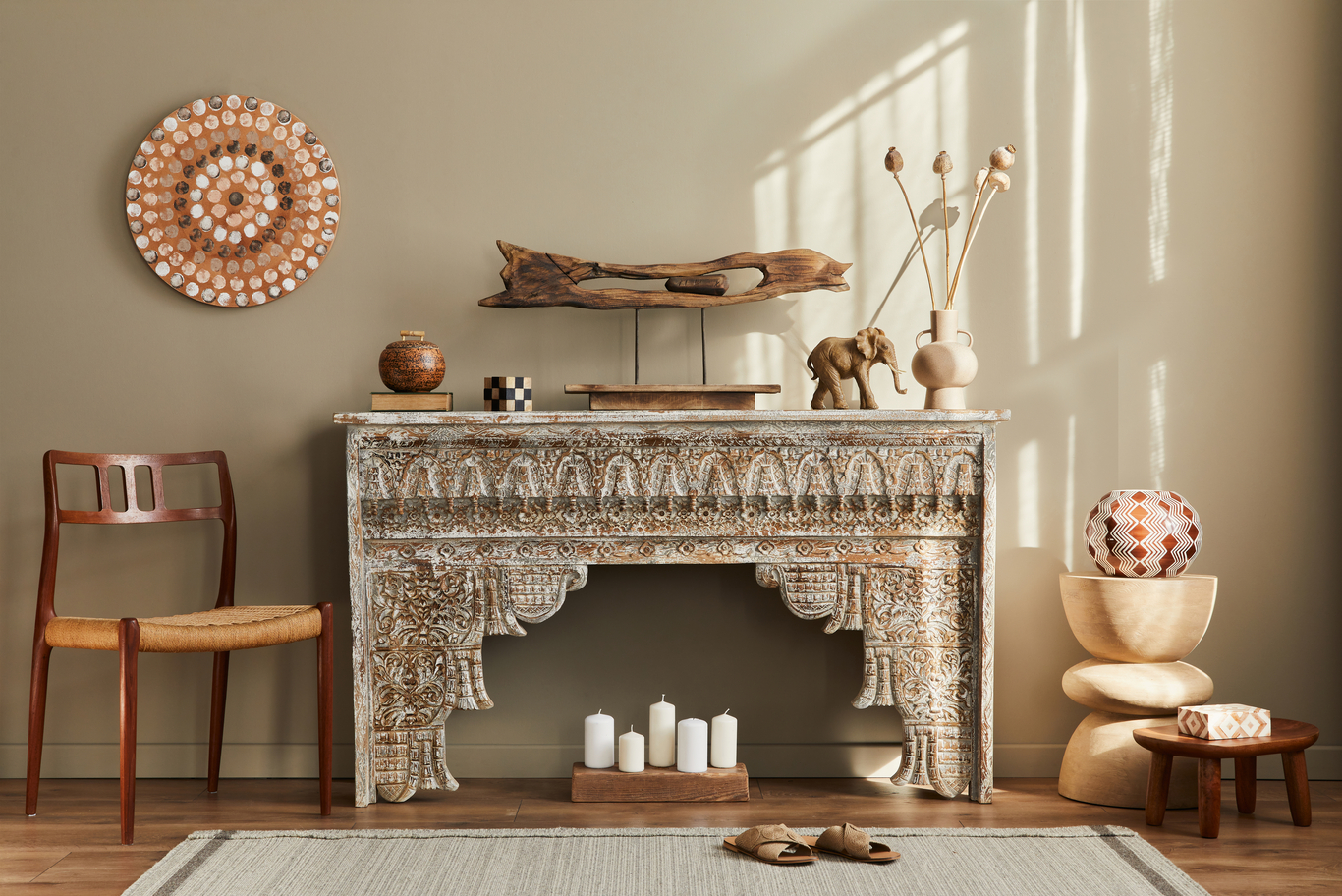
Let Us Help Design Your Moroccan-Inspired Interior
Algedra’s team can support your project at every phase—from planning to implementation. Whether the goal is a complete Moroccan Majlis or a few decorative additions, we offer guidance backed by deep design experience.
Contact Us Here to begin your interior design project